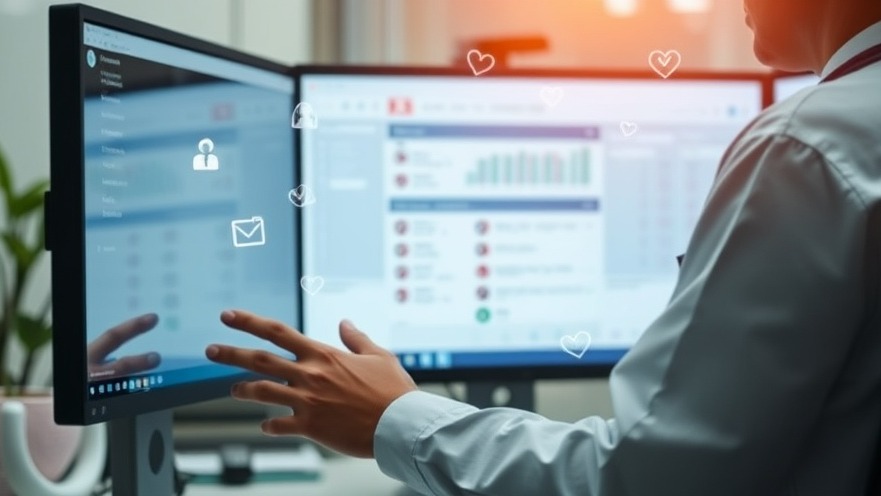
The Communication Crisis in Healthcare
As healthcare increasingly embraces electronic health records (EHR), one might think that efficiency and communication would naturally improve. However, many concierge health practitioners are finding that existing EHR systems often hinder rather than help in key communication processes. EHRs serve as essential hubs for patient information, yet their built-in messaging tools frequently fall short when it comes to real-time communication capabilities.
Understanding the Shortcomings of EHR Messaging
Clinicians often rely on EHR chat features with the expectation that messages will flow smoothly, but this is often not the reality. The embedded communications tend to share three critical limitations that contribute to the growing dissatisfaction among healthcare providers:
No escalation path: Urgent messages may linger without an appropriate response, leaving patients at risk due to delays in care.
Lack of prioritization: When all messages are visually comparable, the sense of urgency can be lost, leading to missed critical updates.
Unclear accountability: Without reliable indicators of whether a message was received or acknowledged, clinicians may waste time with redundant messages.
Why Effective Communication Matters
Weak communication within the healthcare environment is not just an administrative headache; it bears significant consequences for patient care. The failure to address these communication gaps can lead to:
Delayed treatment: Time lost in communication can mean a delay in diagnosing and treating patients, potentially leading to dire outcomes.
Compliance exposure: Failing to track message delivery can leave practices vulnerable to scrutiny and increase the risk of legal challenges due to documentation gaps.
Clinician burnout: Overloading practitioners with notifications can cause emotional exhaustion, detracting from their capacity to engage with patients directly.
Exploring Alternative Communication Solutions
Given the pervasive challenges tied to EHRs' messaging systems, it's critical for healthcare providers to seek solutions that prioritize efficiency and accountability. Here are three key strategies that practitioners should consider when enhancing communication within their practices:
Implement a dedicated communication platform: Separate from EHR systems, specialized messaging applications can provide real-time communication and status updates while ensuring messages are neither missed nor ignored.
Utilize automated escalation protocols: Ensure that messages which don’t receive timely responses automatically escalate to higher-priority channels, thereby improving responsiveness significantly.
Prioritize training staff: Investing in training ensures that all team members are adept at using new communication tools efficiently, reducing reliance on cumbersome EHR messaging systems.
Future Innovations in Healthcare Communication
The landscape of healthcare communication is evolving rapidly. Over the next few years, we expect to see innovations in communication tools emerge, driven both by technological advancements and by growing recognition of their importance:
Integration with AI tools: Artificial intelligence can play a pivotal role in predicting the best communication pathways among care teams, prioritizing messages based on urgency.
Interoperability improvements: As different EHR systems become better at communicating with one another, practices will see a more seamless exchange of information, enhancing patient care.
Customization options: Practitioners will increasingly demand communication systems that tailor alerts and notifications to specific patient needs, further enhancing clinical outcomes.
What You Can Do Now
For many concierge health practitioners, navigating the technical landscape can feel overwhelming. However, embracing effective communication technologies can lead to significant improvements in both patient care and staff satisfaction. Consider evaluating your current systems and seeking solutions that better meet your practice's communication needs.
By making these changes, you don’t just improve efficiency; you also enhance the overall patient experience, ensuring that care is timely and effective as well. Make your communication as innovative as your practice.
 Add Row
Add Row  Add
Add 




Write A Comment